You’re a Chief Revenue Officer, tirelessly driving your company’s financial growth. Traditional commission-based bonuses aren’t cutting it anymore, are they?
Let’s explore innovative bonus structures that go beyond commissions. We’ll delve into profit sharing and performance-based rewards.
We’ll also consider non-monetary incentives that could boost morale and productivity.
Ready to shake things up? Let’s get started on revolutionizing how you’re rewarded for your hard work and success.
Table of Contents
ToggleKey Takeaways
- Traditional bonus structures for CROs revolve around commissions or sales performance, but they have limitations such as a short-term focus and lack of rewards for leadership and innovation.
- Innovative bonus structures for CROs should include other performance indicators, such as customer satisfaction and product innovation contributions, to align behaviors with strategic goals.
- Technology and data analytics can be utilized to ensure transparency and fairness in bonus distribution, as well as to track employee performance holistically.
- In addition to monetary incentives, non-monetary incentives such as flexible work hours or personalized training can also be effective in motivating CROs.
Understanding the Role of a Chief Revenue Officer (CRO
Let’s delve into the vital role a Chief Revenue Officer (CRO) plays in an organization, particularly in relation to innovative bonus structures.
As a CRO, your primary responsibility is to align and optimize all revenue-generating processes. You’re not just another top-level executive; you’re the conductor that orchestrates sales, marketing, customer service, and pricing policies towards one common goal – revenue growth.
Now, consider how this intersects with an unconventional bonus system. Traditional commission structures may not cut it anymore. In today’s technology-driven marketplace where data reigns supreme, you have access to analytics that can help shape more strategic compensation models.
You could tie bonuses to key performance indicators such as customer acquisition cost or lifetime value. This approach encourages teams to focus on long-term client relationships rather than short-term sales.
Moreover, modern tech allows for real-time tracking of these metrics so adjustments can be made swiftly if targets aren’t being met. It’s about equipping you with the tools and insights needed to motivate your team effectively and drive sustainable growth for your organization.
In essence, as a CRO innovating bonus structures isn’t just about enhancing financial rewards; it’s an essential strategy for boosting overall performance and achieving business objectives.
Traditional Bonus Structures for CROs: A Quick Overview
Before diving into the new age approaches, it’s vital to understand the traditional reward systems that have been prevalent in Contract Research Organizations (CROs). Typically, these structures have revolved around commissions or bonuses linked directly to sales performance. You sell more; you earn more – it’s a simple and straightforward concept.
However, this system is not without its drawbacks. It often encourages short-term focus, potentially compromising long-term client relationships or strategic objectives. More importantly, it doesn’t necessarily reward other crucial aspects of your role as a CRO, like team leadership and innovation.
The advent of technology has further complicated matters. With digital transformation reshaping businesses globally, CROs are required to be tech-savvy leaders driving change within their organizations. The old commission-based model falls short in incentivizing these added responsibilities.
In light of this shift in expectations from CROs, there’s an increasing need for innovative bonus structures that go beyond mere sales numbers. These should ideally encompass other key performance indicators such as customer satisfaction rates and technological adaptation efforts while ensuring fair financial rewards for all achievements.
The Limitations of Commission-Based Incentive Models
You’re about to delve into the limitations of commission-based incentive models. Specifically, we’ll focus on issues such as demotivation due to unequal distribution. As you’ll see, this compensation structure can potentially lead to unethical behavior as staff chase commissions rather than adhering to best practices.
Moreover, we’ll explore how these schemes often foster a dangerous short-term focus. They neglect the long-term technological advancements and strategic goals that truly drive sustainable growth.
Demotivation in Unequal Distribution
If there’s perceived inequality in bonus distribution, it can significantly demotivate your team. It’s crucial to use technology and data analytics tools for ensuring transparency and fairness in bonus allocation. These tools can help you track individual performance metrics accurately, eliminating any bias or discrepancy.
Moreover, advanced AI algorithms can predict potential discontentment by analyzing patterns in your team’s behavior and productivity. This insight allows you to make proactive adjustments to the incentive model, thereby maintaining a high level of motivation across the board.
In an era where innovation is key, unequal bonus distribution should be left behind. By leveraging cutting-edge tech solutions, you’ll not only ensure fair incentives but also foster a motivated team ready to embrace future challenges.
Potential for Unethical Behavior
When it comes to the potential for unethical behavior, it’s important that you’re mindful of how your team might exploit loopholes in the system. Technological advancements have made data manipulation easier than ever, with the allure of boosting bonus figures possibly tempting some to stray from ethical paths.
It’s crucial to utilize technology as a double-edged sword here: while it can facilitate foul play, it can also detect and prevent such actions. Implementing robust auditing and tracking systems is key; they’ll pinpoint discrepancies or suspicious patterns swiftly.
You’re not just shielding your organization from harmful practices but also fostering an environment where fairness reigns supreme and productivity thrives. Remember, integrity in bonus structures isn’t simply about rewarding performance—it’s about preserving trust within your team.
Short-Term Focus Dangers
It’s essential to be wary of the dangers associated with a short-term focus, as it could lead to compromised long-term success.
In your pursuit for immediate results in CRO bonus structures, you might overlook critical factors like ethical considerations and sustainable growth.
Let’s consider technology. You’re developing cutting-edge tools for instant gratification but are they scalable? How about their impact on client relationships?
While tech advancements can boost short-term numbers, they shouldn’t compromise your reputation or future prospects. Be aware that focusing solely on immediate wins may strain resources and hinder innovation.
Balance is key. By combining short-term tactics with a clear vision for long-term strategy, you’ll drive both immediate revenues and sustainable growth in the evolving world of CROs.
The Need for Innovative Bonus Structures in Today’s Business Climate
In today’s fast-paced business climate, there’s a growing need for innovative bonus structures to motivate and reward employees. You’re likely aware that traditional bonuses based solely on sales or performance targets can create a short-term focus that undermines long-term growth. Such an approach often leads to the detriment of quality and customer relationships.
Instead, think about implementing bonus structures that incentivize behaviors aligned with your strategic goals. For instance, consider using data analytics tools to track not just sales figures but also customer satisfaction levels and product innovation contributions. That way, you’re rewarding the actions that truly drive sustainable success.
Tech advancements have made these alternative structures more feasible than ever before. With smart algorithms and real-time data analysis, you can ensure bonuses are distributed in a fair and transparent manner. It’s all about harnessing technology to enhance people management strategies.
Remember though, it’s not one-size-fits-all when designing bonus schemes for Contract Research Organizations (CROs). Factor in individual roles, team dynamics plus business objectives to develop a system that genuinely motivates your staff while propelling your company forward.
In the end, an innovative, tech-driven approach could be exactly what you need to thrive in this fast-moving business landscape.
Profit Sharing: A Potential Alternative to Commission
Profit sharing, as an alternative to commission, could be a game changer for your business. You’re familiar with the concept of commission – it’s straightforward, directly linked to individual performance. But let’s consider a more collaborative model: profit sharing.
Imagine a system where your team isn’t solely focused on their own sales but has an invested interest in the company’s overall success. That’s what profit sharing offers. It fosters teamwork, encourages mutual support and enhances loyalty among employees.
In today’s technology-driven market, you need all hands on deck to innovate and stay ahead of competitors. Profit sharing can serve as a catalyst for this kind of cooperative environment because everyone gains when the company profits.
Moreover, you can leverage digital tools to implement transparent and fair profit-sharing models. Advanced analytics allow you to accurately track and distribute shares based on contribution levels. By integrating these systems into your business structure, you’re not only providing extra incentive but also promoting a culture that values collaboration over competition.
Equity-Based Compensation: Aligning Interests With Company Success
Having explored the concept of profit sharing as an alternative to commission-based rewards, it’s time to delve into a different, yet equally intriguing proposition: equity-based compensation. This form of remuneration isn’t just about immediate gratification; instead, it aligns employees’ interests with long-term company success.
In an era where tech startups are booming and digital transformation is reshaping businesses across industries, equity incentives can be particularly compelling. They not only infuse a sense of ownership among your team but also promote a culture of innovation and risk-taking.
Imagine you’re part of a Contract Research Organization (CRO). With equity in your hand, you’re no longer just an employee; you’ve got skin in the game. You’re motivated to push boundaries and harness cutting-edge technology to deliver superior outcomes because the company’s success directly equates to your financial gain. The stakes are higher, but so are the potential rewards.
Equity-based compensation might appear complex initially – there’s vesting schedules and tax implications to consider – but when strategically implemented, they can transform the way your CRO operates. Ultimately, it fosters greater commitment from employees while driving sustainable growth for your organization.
Performance-Based Bonuses: Rewarding Achievement and Growth
You’re now ready to explore performance-based bonuses, another effective way to reward achievement and encourage growth within your team. Unlike equity-based compensation, this approach provides immediate gratification for a job well done and can be easily quantified and tracked with the right technology.
Performance-based bonuses can be customized based on your company’s specific goals. You might choose to reward individuals who surpass their sales targets, or teams that complete major projects ahead of schedule. You’ve got the flexibility to decide what behaviors you want to incentivize.
With today’s advanced HR tech solutions, it’s easier than ever before to effectively manage these bonus structures. These tools not only automate calculation processes but also provide visual analytics for better understanding of bonus impact on overall performance.
However, it’s crucial you set clear expectations and establish measurable criteria upfront. This ensures fairness across the board and keeps everyone focused on what truly matters – enhancing business outcomes through outstanding performance.
Exploring the Impact of Non-Monetary Incentives
Let’s delve into the realm of non-monetary incentives and their potential to motivate your team in unique ways. You may be surprised to discover that not all employees are driven solely by financial gain. In fact, in today’s ever-evolving technologically advanced workplace, non-monetary rewards can often hold more appeal.
These incentives could range from flexible work arrangements enabled by digital tools, to access to cutting-edge tech gadgets or even opportunities for skill enhancement through online learning platforms. It’s important to understand that these perks aren’t just fringe benefits; they’re powerful motivators that can drive performance and loyalty.
Consider this: when you offer an employee a chance to learn new skills through an industry-leading e-learning platform, you’re not only motivating them with the promise of personal growth but also equipping them with tools to contribute more effectively. Similarly, providing flexibility through remote working options doesn’t just increase employee satisfaction – it taps into the increasing digital transformation trend and promotes a culture of trust within your organization.
Implementing New Bonus Structures: Key Considerations
As you delve into the realm of implementing new bonus structures, it’s essential to consider two critical factors: assessing business needs and evaluating employee performance.
You’ll need to harness technological solutions to accurately analyze your company’s requirements and identify areas for improvement or change.
In parallel, a thorough evaluation of employee performance using advanced analytics can provide invaluable insights, shaping your decisions on rewarding your team members effectively.
Assessing Business Needs
Before diving into innovative bonus structures, it’s vital to thoroughly assess your business needs. You need to analyze not just the financial aspect but also consider how technology can optimize your reward system. Ask yourself: How can machine learning or AI enhance my current compensation structure? Can I automate certain processes for increased efficiency?
Ensure you’re in tune with developments within your industry and competitors’ practices as well. It’s not about copying them, but about staying competitive and relevant. Additionally, it’s crucial to understand your employees’ expectations and motivations. Innovative bonuses don’t always mean more cash; they could be flexible work hours or personalized training programs.
Ultimately, an analytical approach combined with insights from tech tools will guide you towards a bonus structure that truly benefits your business.
Evaluating Employee Performance
Evaluating employee performance isn’t just about numbers; it’s also about understanding their skills, motivations, and overall contribution to the team. You’re not simply looking at sales figures or how many projects they’ve completed. It’s more nuanced than that.
With advancements in technology, you can now leverage data analytics to gain a holistic view of your employees’ performances. Tools like performance management software can help you track and analyze key metrics such as productivity levels, engagement rates, and skill development over time.
But don’t forget the human element. Keep lines of communication open with your staff and seek feedback regularly. This combination of high-tech tools and personal interaction will give you a comprehensive picture of employee performance — vital for devising innovative bonus structures.
Case Studies: Successful Bonus Structures in Practice
Let’s delve into some real-world examples of successful bonus structures currently in use.
Google, the tech giant, offers a unique ‘Peer Bonus’ system. Here, you see employees rewarding their peers for good work or collaboration with bonuses that are then approved by managers. This encourages teamwork and fosters an environment where everyone’s contribution is recognized.
Then there’s Spotify. They’ve implemented a flexible bonus model where employees choose how they’d like to be rewarded – cash bonuses, more vacation time or stock options. You can appreciate this system because it gives you control over your rewards and aligns with individual values or long-term goals.
Now let’s look at Intel. They have a “Profit Sharing” structure where all employees get a slice of the company’s annual profits based on their performance ratings, fostering both individual effort and collective success.
Lastly, consider Adobe’s “Check-in” system – it replaces traditional reviews with ongoing feedback conversations between managers and employees about goals and performance, making it easier for you to keep track of your progress towards earning your bonus.
These innovative models prove that moving beyond commission-based incentives can lead to higher employee satisfaction and productivity.



